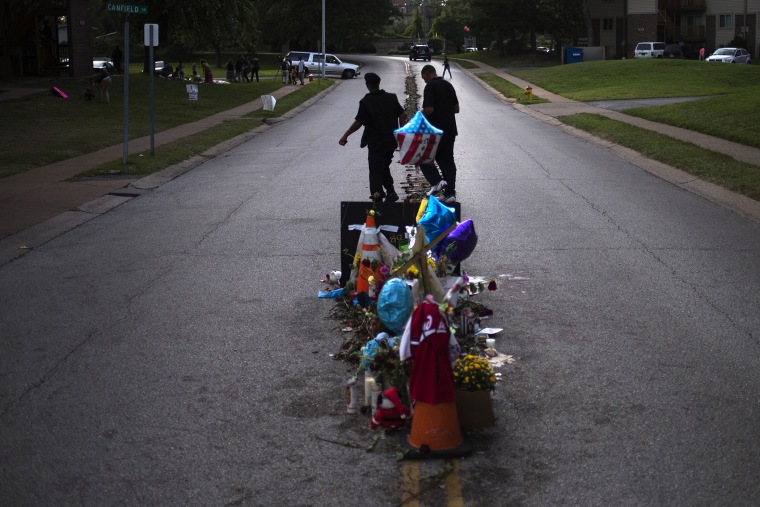A previously unverified audio recording that allegedly captures the final moments of Michael Brown’s life has been verified as authentic, according to the video streaming application it was recorded on.
A resident living in the apartment complex where Brown was killed was using a video messaging app called Glide at the time of the shooting and unwittingly captured the sound of gunfire, according to a lawyer representing the resident, whose identity has not been released.
The recording suggests nearly a dozen shots were fired in an altercation between Brown, who was unarmed at the time, and Ferguson police officer Darren Wilson.
According to Glide the recording was created at 12:02 p.m. CT on Saturday Aug. 9, precisely the time police say Brown was shot.
“A Glide user living nearby (whose identity is being protected) was simply using the Glide app on their smartphone exactly as it was designed – to instantly communicate with a friend through our real-time video texting service. Simultaneously, they also captured audio in the background of the gunshots allegedly fired at Michael Brown,” Glide said in a statement released on Thursday. “Because Glide is the only messaging application using streaming video technology, each message is simultaneously recorded and transmitted, so the exact time can be verified to the second.”
The lawyer, Lopa Blumenthal, said she has shared the recording with the FBI. Federal officials won’t confirm they have this specific recording, but do confirm they are collecting any audio and video of the incident.
The audio could prove to be critical piece of evidence in the ongoing investigation into Brown’s death. It also seems to confirm what some witnesses to the shooting say happened during the incident.
They said Brown, who was black, and Wilson, who is white, were seen struggling through the driver’s side window of Wilson’s police car. They said Wilson fired a single shot from inside his car and then fired several more as Brown attempted to flee. Some witnesses, viewing the incident from different vantage points, have said Wilson fired several shots at Brown and that at some point the boy turned around with his hands up, at which point Wilson fired several more gunshots.
The audio does not capture what happened just moments before or after the shooting. And law enforcement officials say that at this stage it's impossible to know what the significance of this tape may be.
Days before the release of the audio earlier this week, Tommy Chatman-Bey, who lives in the Canefield Green Apartment complex near where Brown was killed, told msnbc that he was outside at the time of the shooting and was an ear-witness.
“I was right out there when I heard it,” Chatman-Bey said. “I heard Boom, Boom, Boom, pause, Boom, Boom, Boom, Boom and then some more.”
The police have not provided many details about the shooting and have not released a detailed police incident report. What Ferguson police have released is a report with little more than the date, time and location of the incident. But more curious are the time stamps on the document. Typically an incident report following a homicide would give a detailed account.
The report, released only after the American Civil Liberties Union of Missouri sued under open records law, suggests a supervisor had not reviewed it until Aug. 19, 10 days after the fatal shooting. Final sign-off wasn’t given until Aug. 20, the report appears to indicate.
Glide in their statement said, “While tragedy is never good news, and our hearts go out to the family of Michael Brown, this incident underscores how technology is changing the landscape of not only journalism, but also criminology. We commend this Glide user for turning their Glide video message over to FBI investigators as possible evidence in this ongoing investigation.”
A key question could be why Wilson paused in the midst of the barrage.
Brown was struck with at least six bullets including two that hit his skull, according to an autopsy performed at the behest of Brown’s family. Lawyers for Brown’s family have been critical of what forensic examiners identified as the two head shots that actually killed Brown. At least one of the shots struck Brown at the top of his head. Witnesses claim that as Brown fell to his knees and attempted to surrender to Wilson that the officer continued to walk toward him, firing several more shots.
St. Louis County Prosecutor Bob McCulloch began presenting evidence in the case to a grand jury last week and said a decision on whether or not Wilson will be charged may not come until October.
